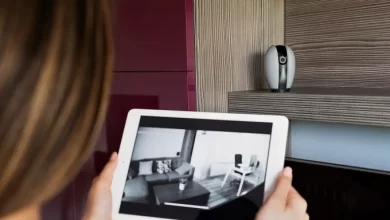What Is A Soundbar And How Does It Work?

Are you tired of the lacklustre sound that your TV produces? Do you want to enhance your audio experience while watching movies or listening to music? If, a soundbar might be the perfect solution for you. In this blog post, we will delve into the world of soundbars and explore how they work to provide immersive sound. So, sit back, relax, and get ready to dive into the world of audio technology!
Sound plays a crucial role in our lives. Whether it’s the dialogues in a movie, the background music of a video game, or the soothing melodies of our favourite songs, sound has the ability to transport us to another world. For this reason, it’s important to invest in quality audio equipment that can enhance our listening experience.
What Is a Soundbar?
A soundbar is a single loudspeaker enclosure that produces high-quality audio output. Its sleek, slim design allows it to be placed in various locations, such as below a TV or mounted on a wall, without taking up much space. Soundbars come in different sizes and configurations, ranging from basic models to those equipped with advanced features like Dolby Atmos and wireless connectivity.
The purpose of this blog post is to demystify soundbars and help you understand how they work. Whether you’re a newcomer to the concept or familiar with soundbars, this post aims to provide valuable insights and tips for selecting the right soundbar for your audio needs.
The Components of a Soundbar
To comprehend how a soundbar works, it’s essential to understand its components. Generally, a typical soundbar consists of the following parts:
- Drivers: Drivers are the actual speakers within the soundbar. They come in various sizes and are responsible for producing sound across different frequency ranges.
- Amplifiers: Amplifiers power the drivers and help deliver high-quality audio output.
- Subwoofer: Some soundbars come with a separate subwoofer that produces deep bass frequencies. This enhances the overall sound quality and immerses you in the audio experience.
- Crossover: The crossover is responsible for distributing the sound frequencies to the appropriate drivers. This ensures that each driver produces the desired range of audio frequencies.
How Does a Soundbar Work?
Now that we have a basic understanding of the components, let’s explore how a soundbar works to produce immersive sound.
1. Sound Projection
One of the key features of a soundbar is its ability to project sound. Unlike traditional TV speakers, which direct sound only in one direction, soundbars use advanced technology to disperse audio throughout the room. The drivers within the soundbar are strategically placed to create a wider soundstage, making you feel like you’re in the middle of the action.
2. Audio Enhancement
Soundbars are designed to enhance the audio quality of your TV. They achieve this by processing the audio signals received from your TV and optimizing them for better clarity and depth. This process involves algorithms and equalization techniques that ensure an immersive and balanced audio experience.
3. Simulated Surround Sound
While soundbars typically consist of a single enclosure, many models can simulate surround sound. By utilizing advanced digital signal processing (DSP) technology, soundbars can recreate the immersive experience of a multi-speaker setup. This means that you can enjoy the surround sound experience without the hassle of setting up multiple speakers around your living room.
4. Wireless Connectivity
Another impressive feature of some soundbars is their ability to connect wirelessly to other audio devices. This means that you can stream music wirelessly from your smartphone, tablet, or computer directly to your soundbar. Additionally, some soundbars have built-in Bluetooth capabilities, enabling you to play audio from compatible devices effortlessly.
5. Integration with Smart Home Devices
With the rise of the Internet of Things (IoT), soundbars are becoming smarter and more integrated with other devices in your home. For example, certain soundbars can be controlled using voice commands through virtual assistants like Amazon Alexa or Google Assistant. This allows for a seamless and hands-free audio experience in your home.
How to Choose the Right Soundbar
With so many soundbar options available in the market, it can be overwhelming to choose the right one for your needs. Here are a few factors to consider when selecting a soundbar:
- Audio Quality: Look for soundbars that offer high-quality audio output with clear dialogues, distinct instrument separation, and deep bass.
- Connectivity Options: Determine if you need wired or wireless connectivity options to connect your soundbar to other devices.
- Size and Design: Consider the size and design of the soundbar to ensure it fits perfectly in your space and complements your existing furniture.
- Budget: Set a budget and explore soundbars within that range. Remember, price doesn’t always determine quality, so read reviews and compare features before making a decision.
Setting Up Your Soundbar
Once you have selected and purchased the perfect soundbar for your needs, it’s time to set it up and start enjoying enhanced audio. Here are a few steps to help you get started:
- Placement: Decide where you want to place your soundbar. It can be positioned below your TV, mounted on a wall, or even placed on a shelf.
- Connection: Connect your soundbar to your TV using an HDMI cable, optical cable, or Bluetooth, depending on the available options.
- Calibration: Some soundbars come with built-in calibration features that optimize the audio output based on your room’s acoustics. Take advantage of these features to fine-tune the sound to your liking.
- Subwoofer Setup: If your soundbar comes with a separate subwoofer, position it in an optimal location to maximize bass response. Experiment with different placements to find the sweet spot.
Further Steps for Audiophiles
If you’re an audio enthusiast or simply want to take your audio experience to the next level, here are some additional steps you can take:
- Invest in High-Resolution Audio: Upgrade your audio sources to high-resolution formats such as FLAC or DSD. These formats preserve more detail and provide a richer audio experience.
- Consider Surround Sound: If you crave a truly immersive experience, explore the possibility of adding rear speakers to your soundbar setup. This will provide enhanced surround sound and make you feel like you’re in the middle of the action.
- Room Acoustics: Experiment with room treatments and acoustic panels to optimize the sound within your listening space. This can significantly enhance the overall audio quality.
Conclusion
Soundbars are revolutionizing the way we experience audio in our homes. With their compact design, advanced technology, and impressive sound projection, soundbars provide a simple yet effective solution to enhance our audio experience. Whether you’re a movie buff, a music lover, or a casual TV viewer, a soundbar can transform the way you listen to audio content.
we explored the components of a soundbar, delved into how they work, and discussed various factors to consider when selecting the right soundbar for your needs. We also provided steps to set up your soundbar and additional suggestions for those seeking a more immersive audio experience.
So, why wait? Upgrade your audio setup today and immerse yourself in the world of high-quality sound with a soundbar!




